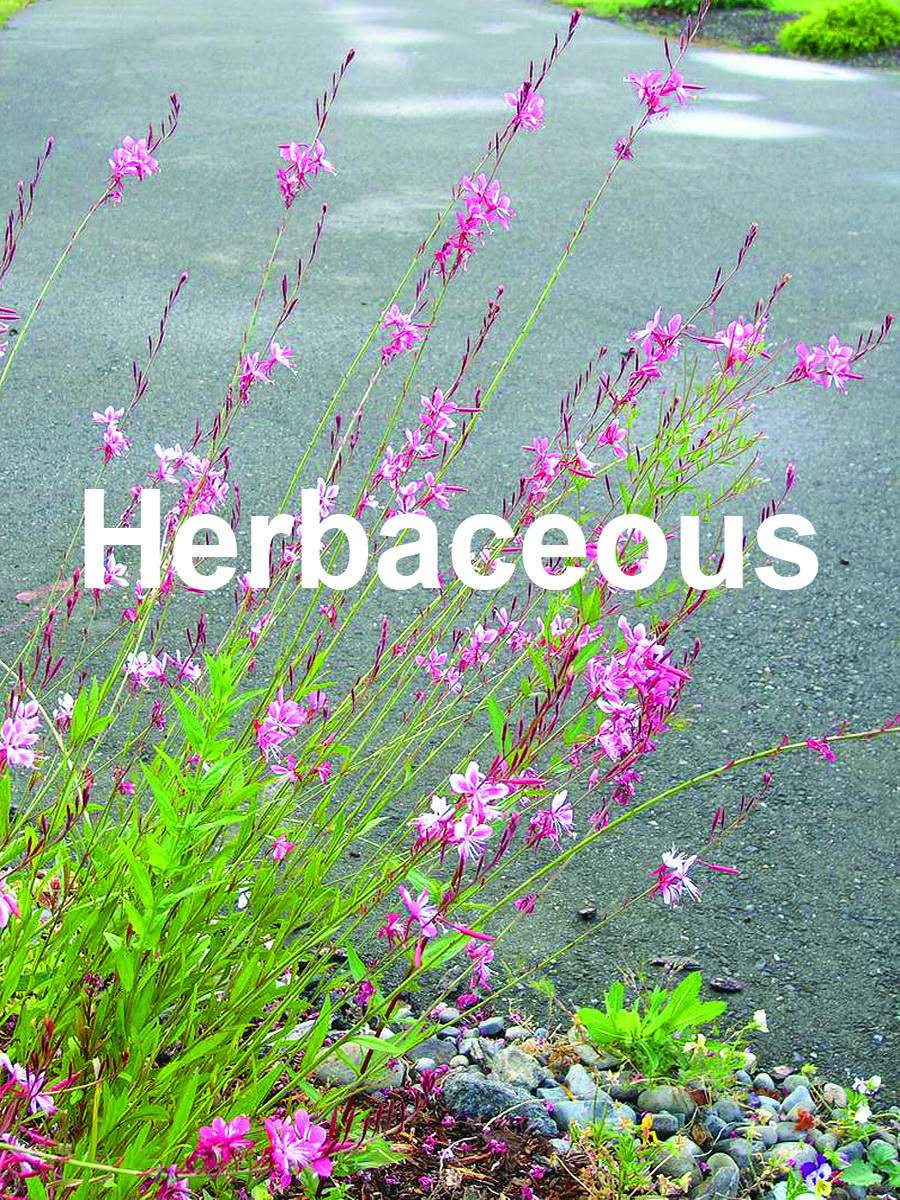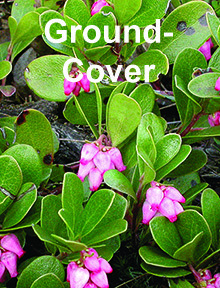Aquatic & Wetland Alternatives for Western WA
Below, you will find non-invasive alternatives to common invasive or noxious weeds.
Looking to replace a specific plant? Click here to jump to that section!
Purple Loosestrife and Garden Loosestrife
Full List of Recommended Aquatic and Wetland Alternatives
Key
Looking for a different type of plant?
Alternatives to Yellow Flag Iris

INVASIVE: Yellow Flag Iris
Iris pseudacorus
Class C Washington State Noxious Weed
With its showy yellow flowers and dense, lance-shaped leaves, yellow flag iris has been a popular addition to ornamental ponds and water gardens. However, this emergent wetland plant quickly spreads through underground rhizomes and rhizome fragments. It is naturalizing along streams, canals, and shorelines throughout Washington, particularly near developed areas. Yellow flag iris can completely displace native wetland plants along the shoreline. Its dense, root-like mat collects sediment and severely reduces water flow, affecting plants, fish, and other animals.
More choices: Arctic iris (Iris setosa), blueflag iris ( I. versicolor), I. virginicum, bearded iris (Iris x germanica), and native species Rocky Mountain iris (I. missouriensis), western skunk cabbage (Lysichiton americanum), and golden-eyed grass (Sisyrinchium californicum).
Learn more here:
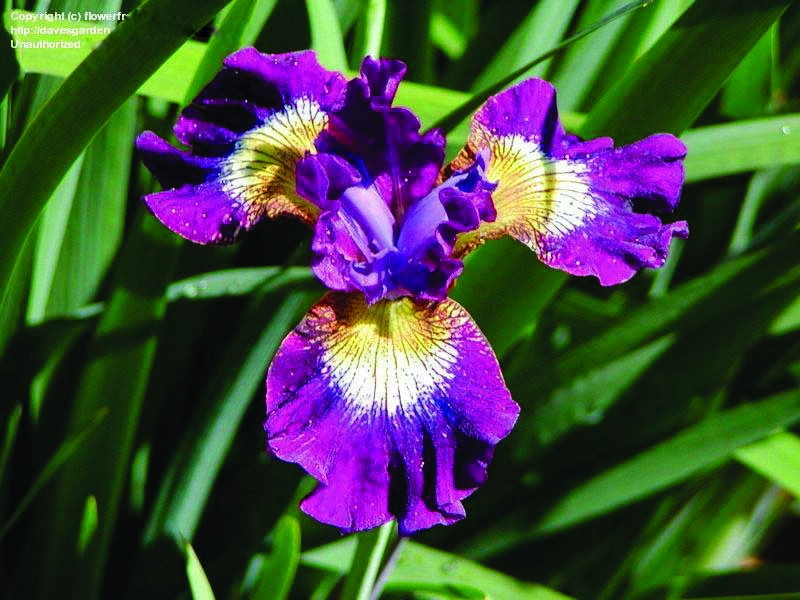
Recommended Alternative: Japanese Iris
Iris ensata, ‘Variegata’ & cultivars
These are beautiful irises for pond edges and bogs.
• They are ideal for wet boggy areas and edge-of-pond plantings, easy to grow.
• Elegant large flowers of white, purple, and violet blue form in late spring and early summer, a little after yellow flag iris.
• Foliage can reach 16 inches, the scale of the plant is smaller than yellow flag iris.
• The foliage of the cultivar ‘Variegata’ offers a creamy white and green foliar accent to pond plantings.
USDA zones 5-8
![]()
![]()
![]()
Image Courtesy of Laura Burton
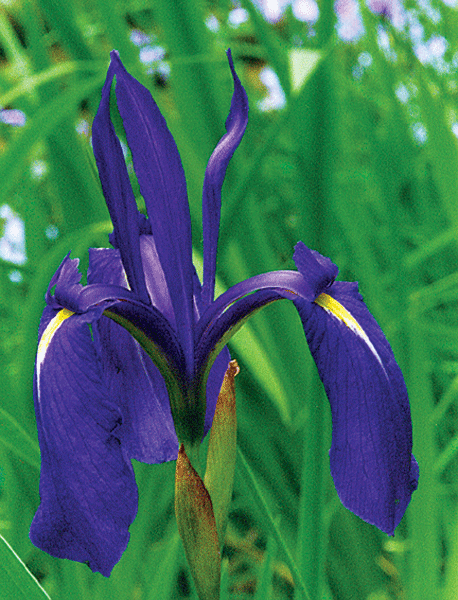
Recommended Alternative: Laevigata Iris
Iris laevigata & cultivars
A true water-loving iris, beautiful in and out of flower.
• An ideal replacement for yellow flag iris in pond plantings, laevigata iris grows well in 6 inches of water. It is also good for wet boggy areas, and it’s easy to grow.
• Flowers are large white, purple, lavender, and pink. Yellow-blooming cultivars are rare.
• Blooms later than yellow flag iris.
• Foliage can reach 18 inches, so the scale of the plant is smaller than yellow flag iris.
USDA zones 2-9
![]()
![]()
![]()
Image Courtesy of Pat Woodward, Pacific Rim Native Plant Nursery
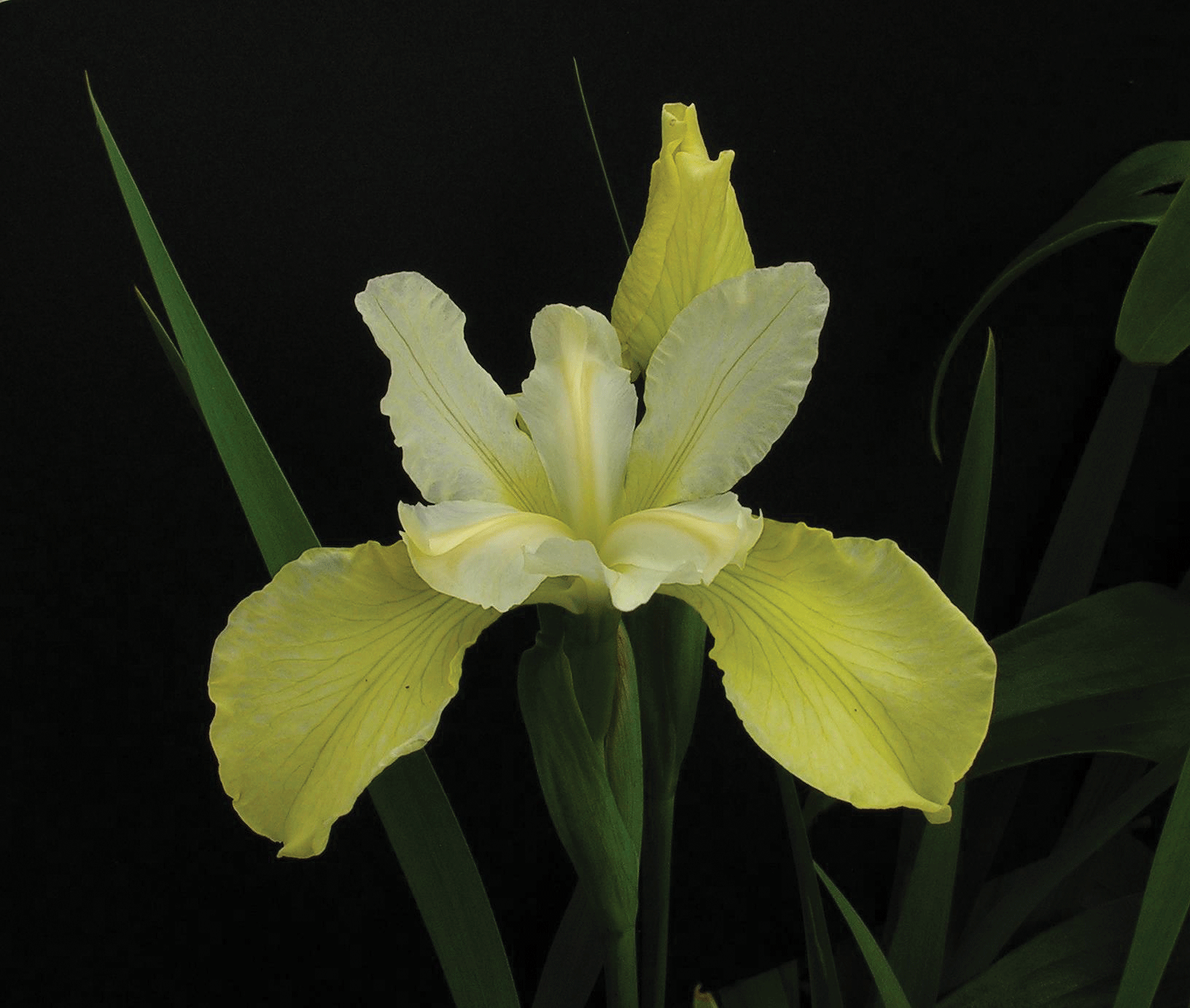
Recommended Alternative: Siberian Iris
Iris sibirica & hybrids such as ‘Butter & Sugan’, ‘Sunfisher’ (both yellow blooming)
A very versatile, easy-to-grow iris: the one to choose, other than a bearded iris, if you want yellow flowers.
• Good for mixed borders with normal water needs; also suitable for damp sites, but not for standing water.
• Flower colors range from white to purple to blue-purple to yellow.
• With foliage usually 2 feet or less, and taller flowers, the plant is smaller than yellow flag iris.
• Blooms May-June, but its lovely foliage makes this iris beautiful in and out of bloom.
USDA zones 4-9
![]()
![]()
![]()
![]()
![]()
Image Courtesy of Pat Woodward, Pacific Rim Native Plant Nursery
Alternatives to Fragrant Water Lily
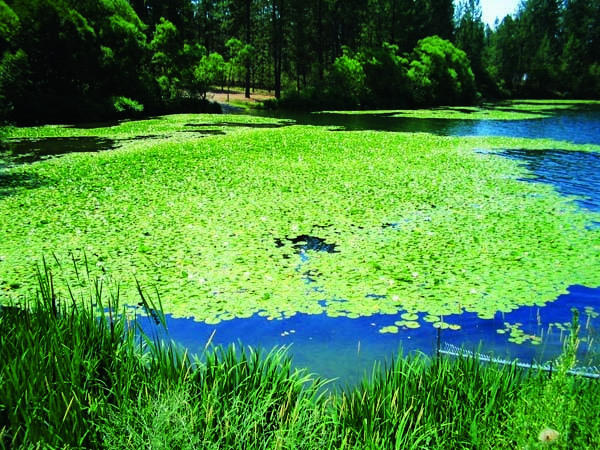
INVASIVE: Fragrant Water Lily
Nymphaea odorata
Class C Washington State Noxious Weed
Although native to the eastern half of the United States, fragrant waterlily has been deliberately introduced into ponds and water gardens in the Pacific Northwest because of its large and beautiful, sweet-smelling white flowers. However, this floating-leaved plant can quickly dominate the water, denying submerged aquatic vegetation light and oxygen, stagnating water flow, degrading habitat for fish and invertebrates, and restricting wildlife and human access to water bodies.
Please remember, never dump water garden, aquarium plants, or aquarium fish into natural water systems.
Learn more here:
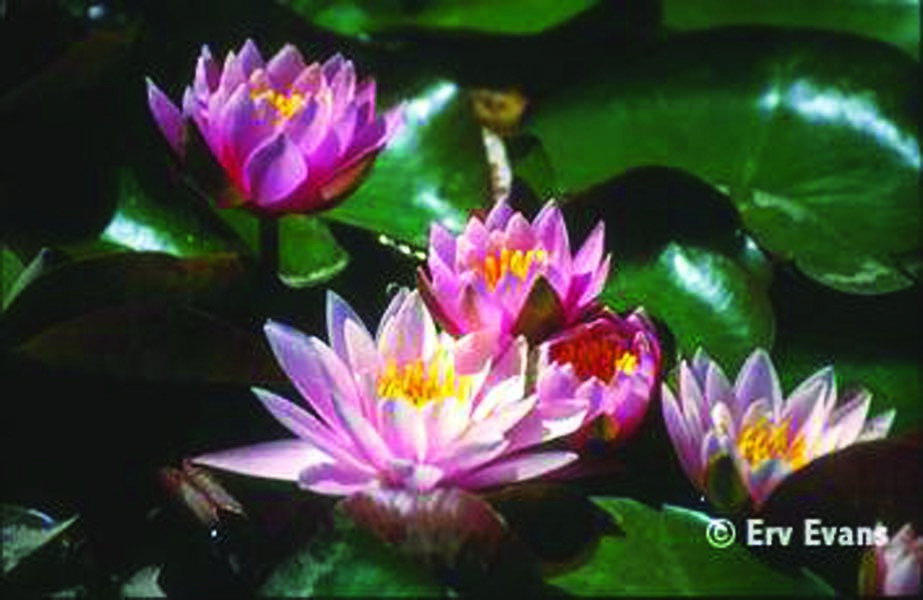
Recommended Alternative: Fragrant Waterlily cultivars
Nymphaea ‘Lucianna’, N. ‘Pink Beauty’, N. ‘Hermine’
These fragrant waterlilies are ideal for contained water gardens.
• Less aggressive cultivars of Nymphaea, such as the Marliac cultivars, come in a wide range of both bold and subtle colors.
• These water garden plants should not be placed in natural ponds, lakes, streams, or rivers where spread may be a danger or a problem.
USDA zones 3-11
![]()
![]()
Image Courtesy of Erv Evans, North Carolina State University
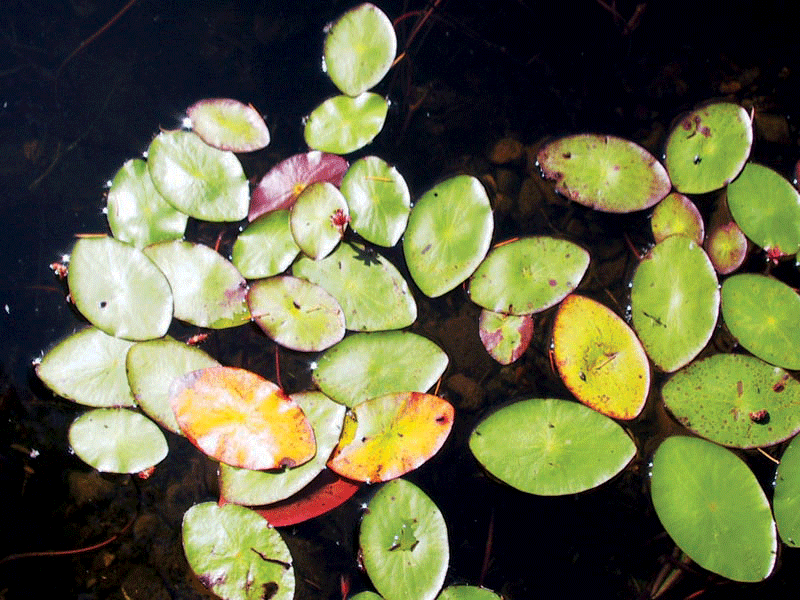
Recommended Alternative: Water Shield
Brasenia schreberi
A native aquatic plant with small floating leaves.
• Floating oval leaves are dark green on top and purple underneath.
• Water shield grows in water 2-6 feet deep.
• Found in lakes around western Washington, water shield is safe to use in natural water bodies to replace fragrant waterlilies.
• The small, dark purple flowers that appear in late summer are attractive but unlike fragrant water lilies’ showy blooms.
• Fish and other wildlife use this plant for valuable food and shelter.
![]()
![]()
![]()
![]()
Image Courtesy of Whatcom County NWCB

Recommended Alternative: Spatterdock
Nuphar polysepala
A large native aquatic plant found in a range of water depths.
• Floating leaves on stiff stems sometimes lift above the water during low water levels.
• The showy yellow flower is dissimilar to fragrant waterlily’s lotus-like bloom, but no less eye-catching.
• This native plant is found in ponds and lakes around Washington and is an important source of food and shelter for local fish and wildlife.
![]()
![]()
![]()
![]()
![]()
Image Courtesy of Ben Legler
Alternatives to Purple Loosestrife and Garden Loosestrife
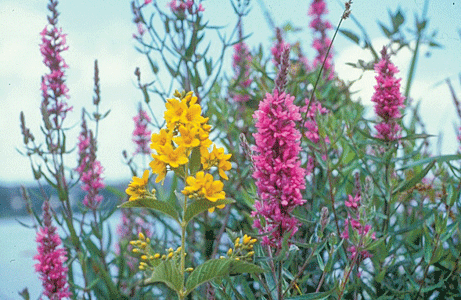
INVASIVE: Purple Loosestrife & Garden Loosestrife
Lythrum salicaria & Lysimachia vulgaris
Class B Washington State Noxious Weed
Both garden and purple loosestrife are common additions to flower gardens. These invasive plants are a major threat to wetlands because of their ability to tolerate saturated soils and spread rapidly into non-disturbed areas. Purple loosestrife is notorious for forming uniform stands; it crowds out all native plants and reduces wetland habitat. Garden loosestrife is a new, serious concern as it has been observed out-competing noxious purple loosestrife in Washington State wetlands.
More choices: Blue giant-hyssop (Agastache foeniculum), Hebe ‘Purple Picture’, cardinal flower (Lobelia cardinalis), dwarf Russian almond (Prunus tenella), tickseed coreopsis (Coreopsis grandiflora), bluebeard (Caryopteris incana), and WA native monkeyflowers (Mimulus guttatus and M. lewisii) and Penstemon species.
Learn more here:
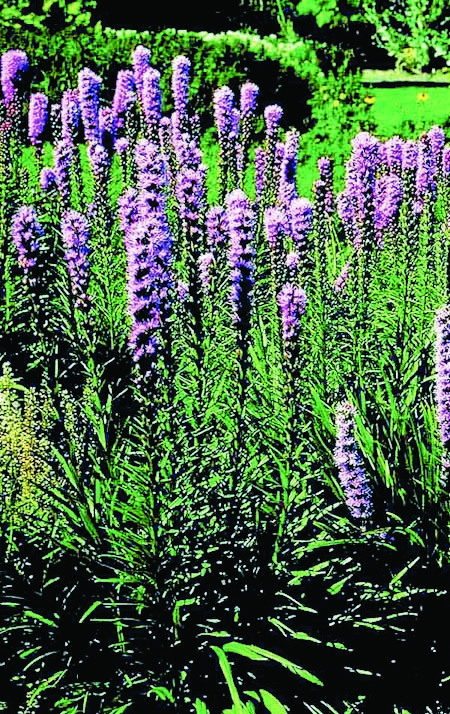
Recommended Alternative: Gayfeather
Liatris spicata
Eye-catching, purple-spiked perennial.
• Tall spikes of purple flowers are similar in appearance to purple loosestrife.
• This plant takes full sun.
• Gayfeather blooms July through September, around the same time as purple loosestrife.
• Unlike purple loosestrife, it likes well-drained soils.
USDA zones 3-9
![]()
![]()
![]()
Image Courtesy of Monrovia Nursery
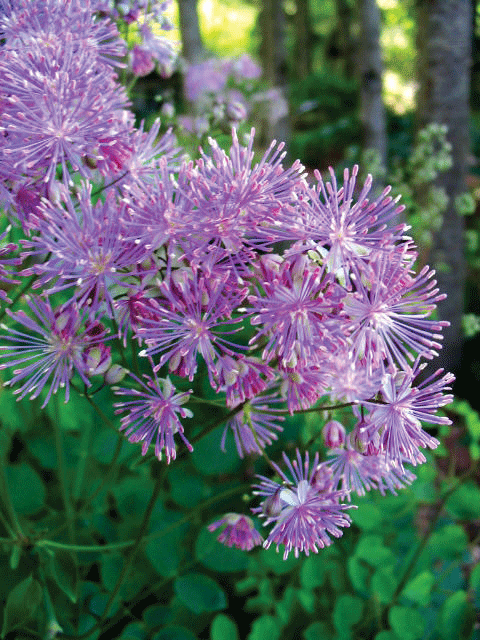
Recommended Alternative: Meadow Rue
Thalictrum aquilegiifolium
Features light and airy flowers above feathery foliage.
• Mauve-to-purple flowers are similar to purple loosestrife.
• This plant thrives in moist, rich soils, like the two invasive loosestrife species.
• It tolerates full sun to light shade.
• The divided leaves resemble those of the columbine.
USDA zones 5-9
![]()
![]()
![]()
Image Courtesy of Carla Johnston
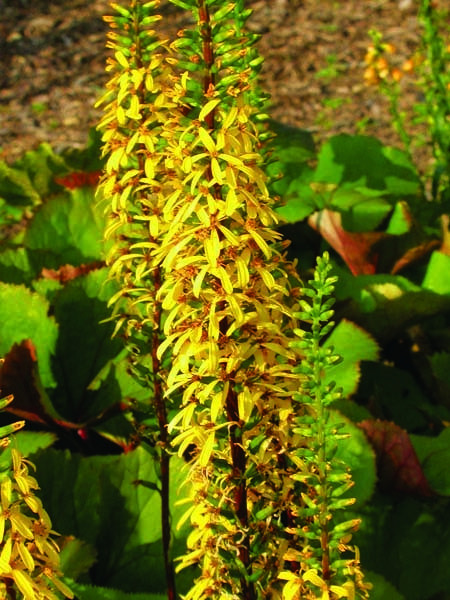
Recommended Alternative: Wison’s Ligularia
Ligularia wilsoniana
A tall and showy wetland perennial.
• Spikes of bright yellow flowers open in mid-to-late summer, about the same time garden loosestrife blooms.
• It grows in moist conditions, like garden loosestrife.
• This ligularia takes full sun to partial shade.
• Cultivars of Ligularia dentata and L. przewalskii also have showy flower spikes, with L. dentata having shorter spikes.
USDA zones 5-9
![]()
![]()
![]()
Image Courtesy of Carla Johnston
Full List of Recommended Aquatic and Wetland Alternatives
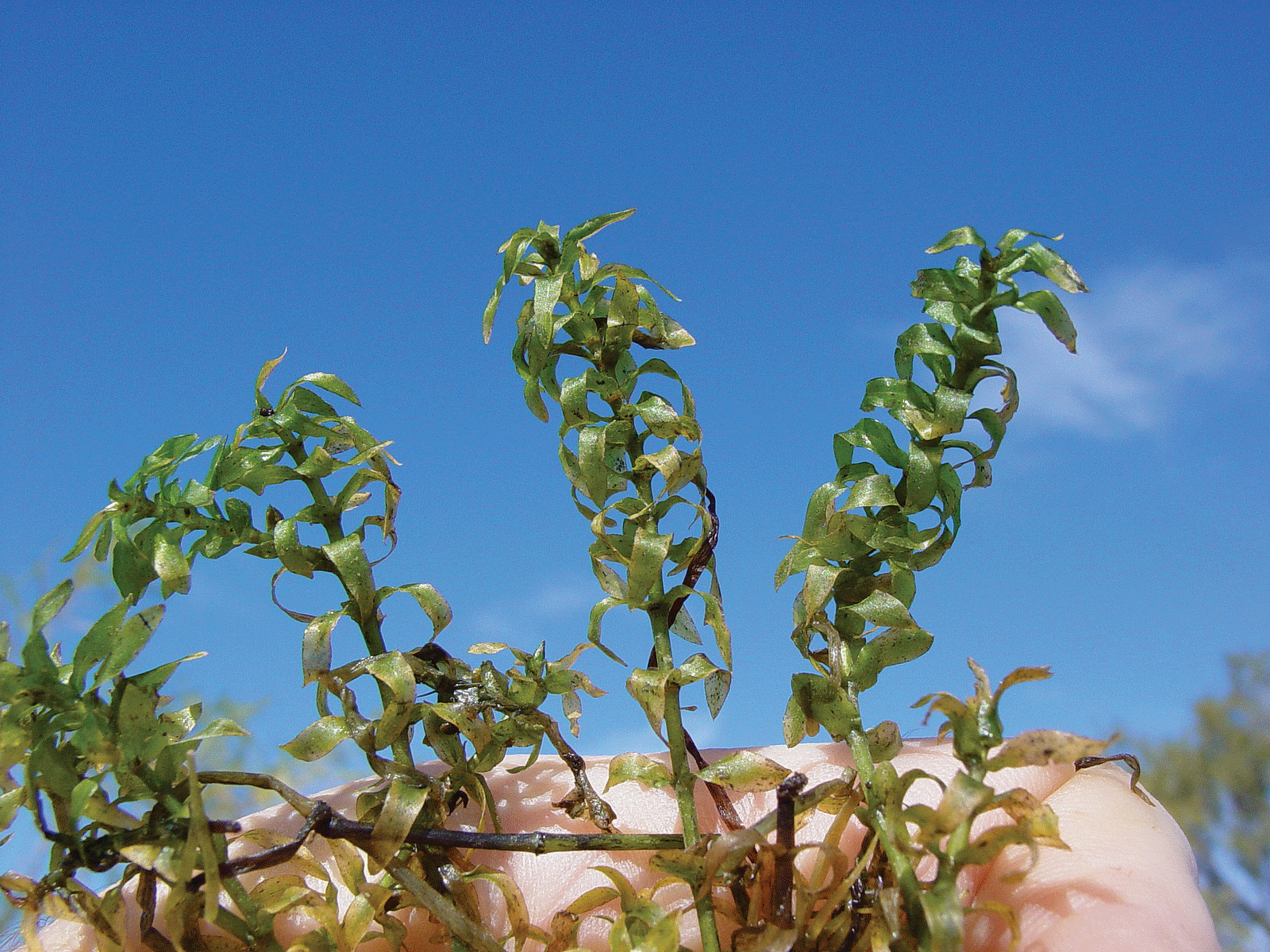
The following is a list of recommended plants for wetland and aquatic areas in Western Washington. You can find more suggestions of non-invasive plants from your local nursery, WSU Master Gardeners, and at www.GreatPlantPicks.org.
- Japanese Iris, Iris ensata, ‘Variegata’ & cultivars
- Laevigata Iris, Iris laevigata & cultivars
- Siberian Iris, Iris sibirica & hybrids such as ‘Butter & Sugar’ Sunfisher, both yellow blooming
- Arctic iris, Iris setosa
- Blueflag iris, I. versicolor, I. virginicum
- Bearded iris, Iris x germanica
- Rocky Mountain iris, I. missouriensis
- Western skunk cabbage, Lysichiton americanum
- Golden-eyed grass, Sisyrinchium californicum
- Fragrant Waterlily Culivars, Nymphaea ‘Lucianna’, N. ‘Pink Beauty’, N. ‘Hermine’
- Water Shield, Brasenia schreberi
- Spatterdock, Nuphar polysepala
- Gayfeather, Liatris spicata
- Meadow Rue, Thalictrum aquilegiifolium
- Wison's Ligularia, Ligularia wilsoniana
- Blue Giant-Hyssop, Agastache foeniculum
- Hebe ‘Purple Picture’
- Cardinal Flower, Lobelia cardinalis
- Dwarf Russian Almond, Prunus tenella
- Tickseed Coreopsis, Coreopsis grandiflora
- Bluebeard, Caryopteris incana
- Monkeyflowers, Mimulus guttatus and M. lewisii
- Penstemon, Penstemon spp.



